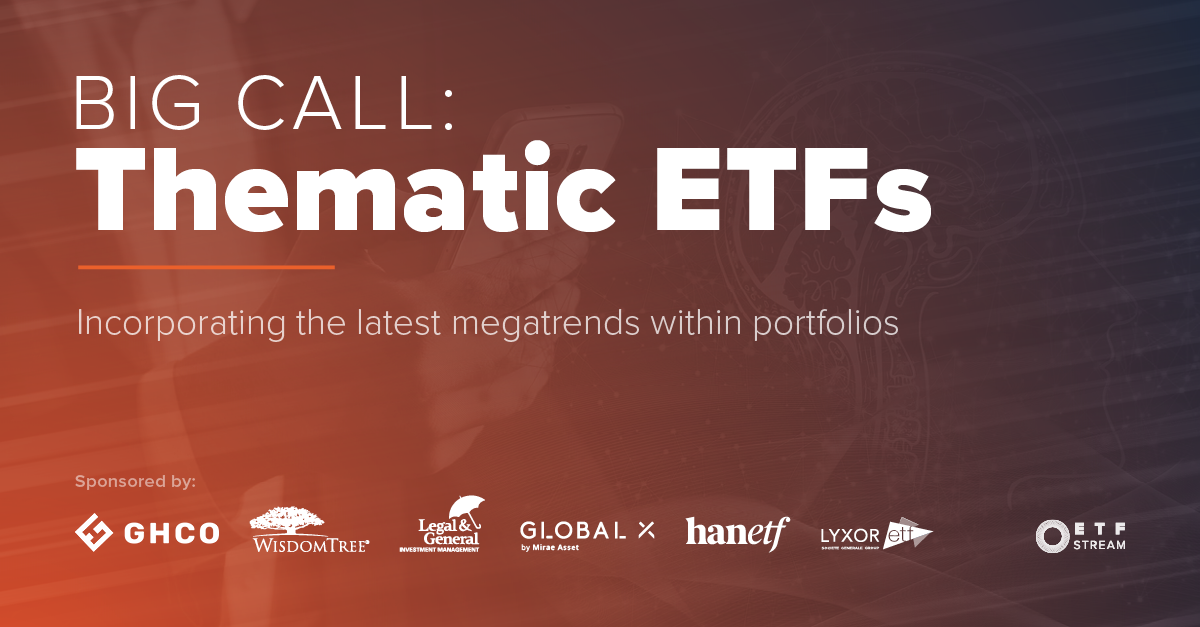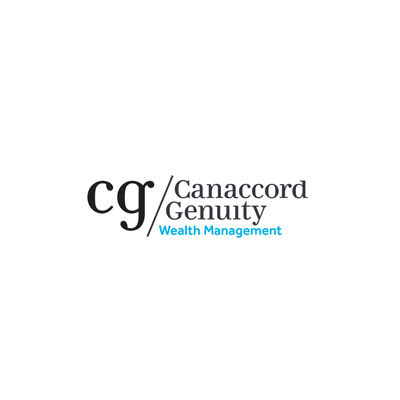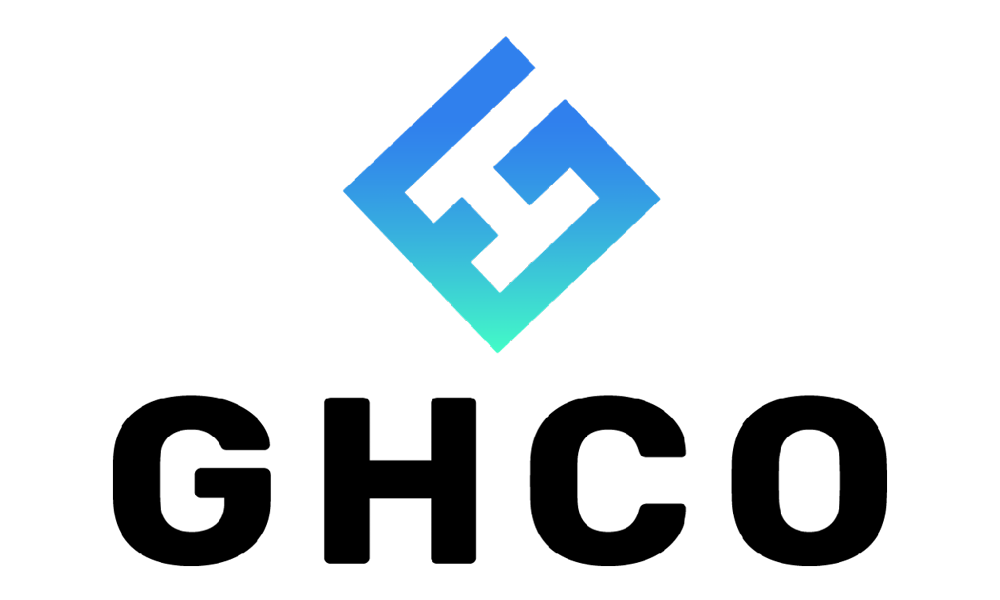The strengths and pitfalls of thematic ETFs, how to play the most popular megatrends and the rise of cryptocurrency ETPs were all discussed at ETF Stream’s first Big Call event of the year, Big Call: Thematic ETFs.
The event analysed the sticking power of the structural shifts being watched by the world of investment – the clean energy transition, the digital economy and the high profile rise of crypto assets – and looked under the bonnet of the products tracking these securities of the future.
Having gone through something of a revolution in recent years, thematic ETFs shot the lights out in 2020 with €10bn inflows and 23 new launches in Europe, according to data from Bloomberg Intelligence.
Already, this looks likely to be surpassed in 2021 with €5.6bn inflows during the first two months of the year, and new products being launched on a regular basis.
According to Megan Brennan, multi-asset portfolio manager at Sarasin & Partners, the search for growth has led investors to look to disruptors, and this, in turn, has caused them to seek out thematic products offering exposure to long-term trends.
“Themes have to bring structural change, have to be long-term, and have to be investable,” Brennan said.
Evangelos Assimakos, investment director at Rathbones, added passive investing has been a driving force behind thematics growth, with investors looking for broad baskets of companies driving paradigm shifts.
Assimakos said: “Thematics have been pushed by passive investing, which offers a cheap way to get exposure to these trends. They’re fulfilling a need for retail investors especially.”
Hector McNeil, co-founder and co-CEO at HANetf, said ETFs are a key tool for democratising investment by offering easy access to the most important megatrends.
“You could not do this 10 or 15 years ago. The whole thing has become more scalable with index providers such as Solactive coming up as disrupting the industry,” McNeil noted.
Going forwards, panellists agreed thematics must address ESG criteria. Failing to do so, Brennan warned, could see issuers facing the risk of stranded assets – despite seemingly futuristic intentions, companies with unsustainable goods and services are likely to have a smaller role in the future economy.
Assimakos concluded: “A theme can look exciting on paper, but if it fails on ESG, it will not have the same staying power in the long-term.”
Getting green right
Directly addressing ESG concerns are thematic ETFs offering exposure to the clean energy transition.
Howie Li, head of ETFs at Legal & General Investment Management (LGIM), said out of the products tracking future energy sources, those focusing on wind and solar power are among the most developed, while those seeking to capture the hydrogen economy are at an earlier stage.
Despite this, Li said LGIM’s fundamental approach remains the same. The company examines a company’s value chains within a specific energy category and then identifies which ones are deriving revenue from, and helping to develop, the category in question.
However, Li noted investors should be mindful of concentrations in particular themes or even individual stocks.
“Some investors are not aware of the concentration towards a single stock when you put the portfolios together,” Li continued.“The key thing to look out for is overlap between portfolios, and make sure you’re happy with the overlap if there is one.”
LGIM attempts to limit concentration risk by reindexing, applying cap limits, and identifying unique weightings that investors are unlikely to be exposed to in a number of different products.
Overall, Li said protecting granularity alongside pure-play exposure is a mantra for LGIM’s portfolio construction.
“Everything is broadly equal weight. Our view is that it is too early to pick the individual winners, so diversifying is the way forward. We are trying to broadly target the winners of the new economy.”
Digital economy power play
Much like clean energy ETFs, tech thematic plays rose to new heights in 2020 with companies facilitating the digital economy in the spotlight as investors look ahead.
Morgane Delledonne, director of research at Global X, said many are guilty of underestimating the potential of sub-trends within the digital economy in particular.
“In the last ten years, the OECD estimates that half of the value of the value added and new employment in the G20 has come from the digital economy.
“Over the past decade, the digital economy has grown by 7% per annum versus the 2% on average for the overall economy,” Delledonne noted.
Global X targets early entry points into digital economy subthemes, to capture the full extent of available growth. While appreciating the role of smaller disruptors, the firm market caps it products to capture companies as they reach new levels of success.
Delledonne added: “Because there will be a shift towards the digital economy, thematic investing might replace some of the traditional sector allocations.”
Much like LGIM, Global X values pure-play exposure to underlying themes, while using a passive approach to capture a broad basket of potential winners.
Has crypto’s time come?
In recent months, crypto has somewhat stolen the limelight from other themes, with bitcoin hitting all-time-highs, and new – particularly central-counterparty-cleared – Ethereum ETPs coming to market.
Keen to downplay comparisons to the rally of 2018-2017, Stefan Kaba-Ferreiro, head of trading and partner at GHCO, said bitcoin’s latest bull run was different. Namely, he believes it marked the beginning of a new, more robust paradigm for crypto.
“This time around, custody has improved, we have institutional interest. It’s getting a lot more industrial and understood,” Kaba-Ferreiro noted.
Panellists also agreed the 2021 inflation narrative will continue to play into the hands of crypto investors.
Tancredi Cordero, founder and CEO of Kuros Associates, said most asset classes are becoming more and more correlated, either directly or inversely. Cordero said although tech and cryptos both rallied during the turn of the year, the recent tech drawdown was not directly correlated in crypto assets, with bitcoin hitting a new all-time-high within weeks of the tech dip.
Jason Guthrie, director of capital markets at WisdomTree, noted investors fearing a devaluation in fiats may seek a crypto hedge in place of or complimenting the traditional role of gold.
Guthrie said: “We see people coming to the space for an inflation hedge and currency considerations and this is another reason why we’re seeing institutional involvement.”
Guthrie admitted latency problems are still in play but being explored. However, many of the go-to critiques of crypto are beginning to look dated.
“The fact there is more confidence and fewer bad actors is huge in terms of bringing new investment products to the space,” Guthrie continued. “We are still in the early days of the crypto story, but a lot of the early criticisms are beginning to fall away.”
Further optimism was offered by way of regulators’ direction of travel. Despite the recent ban on crypto ETPs being sold to UK retail investors, panellists thought greater professional participation in crypto assets will be facilitated by regulators seeking to catch up with innovation and bring cryptos under the ‘regulatory umbrella’.
Cordero closed by saying investors would likely branch out into lesser-known crypto assets as further publicity counters the human bias towards familiarity. He added price growth may be on its way as the gradual mainstreaming of cryptos releases trapped flows.
“I think the long-term trajectory is definitely upwards, and I do not struggle to see the bitcoin price to hit $100,000 in the next year, even if it corrects to $40,000 in the meantime,” Cordero concluded.
Opportunities and pitfalls
Ultimately, the key drawback of thematic ETFs is the dilemma created by the relative specificity of their target exposure.
Put more succinctly by François Millet, head of ETF strategy, ESG and innovation at Lyxor: “There is a triangular trade-off between the purity of a theme, its diversification, and its liquidity.”
On the other hand, Justin Oliver, deputy CIO at Canaccord Genuity Wealth Management, said thematics are a boon for issuers as they are normally based on a compelling and untechnical investment narrative about pre-empting the ‘next big thing’.
The cost of constructing new indexes also invites higher fees, which acts as an incentive for issuers to continuously launch more innovative and attention-grabbing products.
Furthermore, Sam Dickens, portfolio manager at IG, noted that on the investor side, thematics are popular among those seeking targeted exposure to future themes which are underweighted in broad benchmarks such as the FTSE 100.
Regarding immediate concerns about flows plateauing in some products, Millet said thematics are first and foremost long-term plays trying to capture secular change, and thus short-term stabilisation should be expected – and not feared.
On concentration risks, Oliver said the ETF sector deserves credit as there are ongoing discussions about the concerns surrounding size and liquidity issues. In the long run, he believes thematic ETFs will be boosted by their focus on business activities which are typically viewed as being more sustainable.
“There has been a confluence in the growth of thematic ETFs, and ESG, they kind of go hand-in-hand,” Oliver concluded.
Further reading













